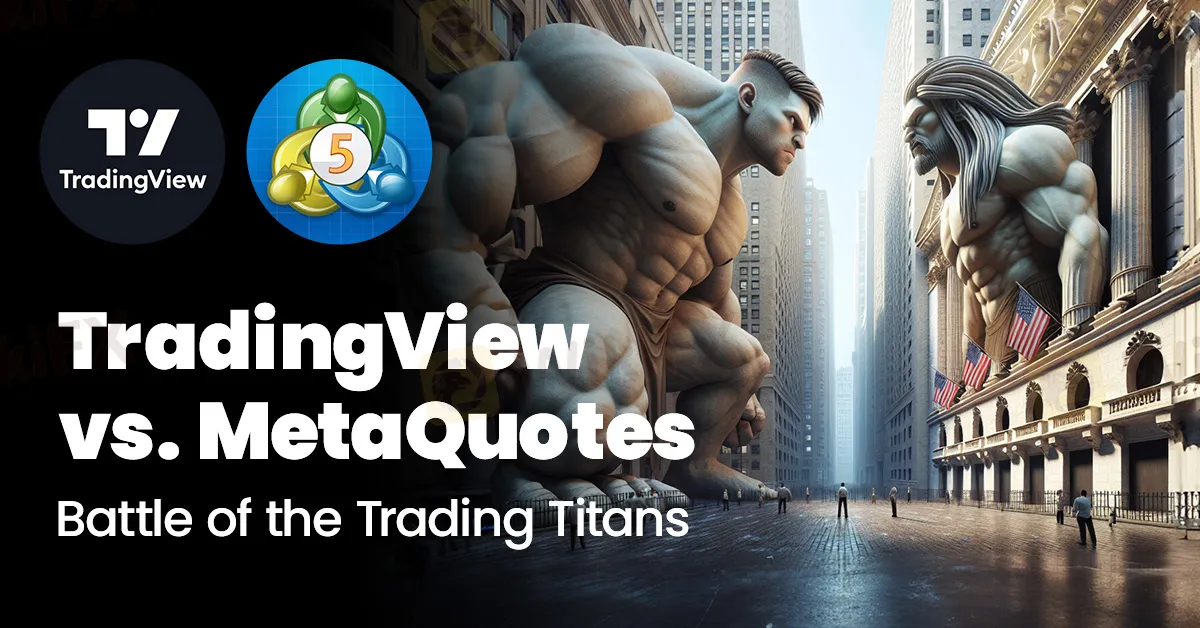简体中文
繁體中文
English
Pусский
日本語
ภาษาไทย
Tiếng Việt
Bahasa Indonesia
Español
हिन्दी
Filippiiniläinen
Français
Deutsch
Português
Türkçe
한국어
العربية
TradingView vs. MetaQuotes | Battle of the Trading Titans
Abstract:Among the plethora of trading platforms available, two giants stand out: TradingView and MetaQuotes. How does a trader choose between these two titans?

In the realm of forex and cryptocurrency trading, selecting the appropriate trading platform is a critical decision for traders seeking success in the fast-paced environment. Among the array of platforms available, two prominent contenders have emerged: TradingView and MetaQuotes. These platforms have distinct features and cater to diverse trading needs, prompting traders to contemplate which one best suits their requirements.
TradingView has garnered a significant following among traders due to its user-friendly interface, robust charting tools, and extensive library of technical indicators. Utilizing a cloud-based platform, TradingView offers traders the flexibility to access charts and analysis from any internet-connected device. Moreover, the platform fosters collaboration and learning through its vibrant community, enabling traders to share insights, strategies, and analyses.
Contrastingly, MetaQuotes has established itself as a cornerstone in the forex and cryptocurrency trading industry, primarily through its flagship platforms, MetaTrader 4 (MT4) and MetaTrader 5 (MT5). Renowned for their reliability and stability, MetaQuotes platforms offer a plethora of features, including automated trading capabilities facilitated by expert advisors (EAs), customizable charting tools, and an integrated marketplace for trading signals and indicators.

The decision between TradingView and MetaQuotes hinges on various factors, including individual preferences and trading styles. TradingView appeals to traders valuing community interaction and intuitive interfaces, with its extensive array of technical tools catering to those reliant on technical analysis. Conversely, MetaQuotes platforms are favoured by traders seeking advanced charting functionalities and automated trading options, particularly beneficial for algorithmic traders utilizing EAs.
It is noteworthy that both TradingView and MetaQuotes provide free demo accounts, enabling traders to test the platforms and assess their compatibility with their trading strategies before committing to live accounts. Additionally, many brokerage firms offer both TradingView and MetaQuotes platforms, affording traders the flexibility to switch between the two as necessary.
In conclusion, the selection of a trading platform plays a pivotal role in a trader's journey in the forex and cryptocurrency markets. By meticulously evaluating the strengths and weaknesses of TradingView and MetaQuotes, traders can make informed decisions aligned with their trading objectives and preferences, thus maximizing their chances of success in the dynamic trading landscape.

Disclaimer:
The views in this article only represent the author's personal views, and do not constitute investment advice on this platform. This platform does not guarantee the accuracy, completeness and timeliness of the information in the article, and will not be liable for any loss caused by the use of or reliance on the information in the article.
Read more

Breaking News! Federal Reserve Slows Down Interest Rate Cuts
The latest Federal Reserve meeting minutes show that Fed officials are generally concerned about the upward risks to inflation, suggesting that future rate cuts may slow down.

Big News! UK 30-Year Bond Yields Soar to 25-Year High!
Following the successful auction of 30-year government bonds by the UK, the yield on 30-year bonds surged, reaching its highest level in 25 years. This increase reflects growing concerns in the market over the government's fiscal policies and large-scale debt issuance.

Beware of Fraudulent Letters: Malaysia’s Securities Commission Issues Warning
The Securities Commission Malaysia (SC) has raised an alarm over fraudulent letters and emails falsely claiming to be from the regulatory body. These fake communications are allegedly tied to illicit investment schemes that seek payments from unsuspecting investors.

Singapore’s New Law Allows Police to Freeze Scam Victims’ Bank Accounts
Singapore has enacted a new law enabling police to freeze bank accounts of scam victims as a last-resort measure to prevent financial losses.
WikiFX Broker
Latest News
Attention! Goldman Sachs Cuts Gold Target to $2910
Inflation Rebounds: ECB's Big Rate Cut Now Unlikely
Carney \considering\ entering race to replace Canada\s Trudeau
High-Potential Investments: Top 10 Stocks to Watch in 2025
US Dollar Insights: Key FX Trends You Need to Know
Why Is Nvidia Making Headlines Everywhere Today?
Discover How Your Trading Personality Shapes Success
FINRA Charges UBS $1.1 Million for a Decade of False Trade Confirmations
Pepperstone Sponsored the "Aston Martin Aramco Formula One Team"
ACY Securities Integrates MetaTrader 5 to Enhnace Copy Trading Service
Currency Calculator







